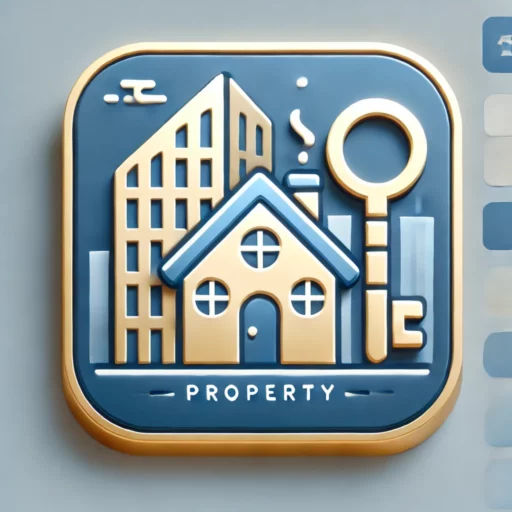Sustainability is no longer just a buzzword—it’s a game-changer in real estate. Whether you’re a first-time buyer, a seasoned investor, or just curious about the latest trends, sustainable practices are transforming how properties are built, bought, sold, and lived in.
Let’s explore the 9 powerful ways sustainability is shaping the future of property, and how you can benefit from embracing this green movement.
1. The Rise of Eco-Friendly Building Materials
Sustainable Choices in Construction
The shift toward eco-friendly building materials is undeniable. Developers now prioritize low-impact materials like recycled steel, bamboo, rammed earth, and low-VOC paints. These materials reduce environmental damage, conserve energy, and create healthier indoor environments.
Benefits for Long-Term Investors
For those looking into property investment, using sustainable materials adds long-term value. These homes often require fewer repairs and attract buyers willing to pay a premium for green credentials. It’s a win-win for the planet and your wallet.
2. Energy-Efficient Home Designs
Solar Panels and Smart Grids
Energy-efficient homes are no longer the future—they’re the present. From solar panels to smart grids, homeowners are now taking control of their energy consumption. Lower utility bills and reduced environmental impact? Yes, please.
Green Certifications and ROI
Homes with certifications like LEED or ENERGY STAR see higher resale values. These labels not only attract eco-conscious buyers but also boost ROI, making them ideal for modern real estate investors.
3. Water Conservation Is a Top Priority
Greywater Systems and Rainwater Harvesting
Gone are the days of wasting water. Greywater systems recycle water from sinks and showers, while rainwater harvesting allows homeowners to store and reuse rain for gardening or flushing toilets. Simple systems, big savings.
Sustainable Landscaping
Xeriscaping—landscaping with native, drought-resistant plants—is gaining popularity, especially in areas with water shortages. It’s a great way to reduce costs and support local ecosystems.
4. Urban Planning Goes Green
Walkability and Mixed-Use Zones
Urban developers now design cities with sustainability in mind. Think bike paths, walkable neighborhoods, and buildings that mix residential, commercial, and entertainment spaces. This approach reduces commute times, car usage, and pollution.
Reducing Carbon Footprints
Smart urban planning is one of the most effective ways to lower carbon emissions. It supports cleaner air and healthier communities—values more homebuyers are considering than ever before.

5. Smart Technologies Driving Sustainability
Smart Thermostats and Energy Tracking
Smart home devices like Nest thermostats and smart meters help track energy usage and optimize performance. These gadgets aren’t just for tech geeks—they’re must-haves for anyone wanting to live efficiently.
IoT Integration in Property Management
For rental property owners, Internet of Things (IoT) devices make managing utilities easier. Leak detectors, smart lighting, and remote HVAC control help reduce maintenance costs while keeping tenants happy.
6. Tenant Demand for Green Living
Eco-Conscious Renters’ Preferences
Today’s tenants—especially Gen Z and Millennials—want to live sustainably. They actively look for green-certified apartments, energy-efficient appliances, and recycling programs. Ignoring this shift could cost landlords in the long run.
Landlord Incentives for Going Green
Landlords are catching on. Sustainable upgrades can result in tax breaks and energy rebates. More importantly, they increase tenant retention—vital in today’s competitive rental markets. Don’t forget to review rental laws to stay compliant while going green.
7. Sustainability as a Selling Point
Green Property Values Are Rising
The market is speaking loud and clear: sustainable properties sell faster and at higher prices. Buyers aren’t just buying a house—they’re buying peace of mind that their home won’t drain their finances or the planet.
Marketing Sustainable Features Effectively
Highlight your property’s green features in listings. Think solar power, energy ratings, water-saving features, or low-impact materials. A quick link to property-selling tips can make your listing even stronger.
8. Legal and Regulatory Shifts
New Environmental Building Codes
Governments around the globe are adopting stricter building codes focused on sustainability. From minimum energy performance standards to mandatory green spaces, compliance is becoming non-negotiable.
Incentives for Sustainable Upgrades
There’s good news too—many regions offer grants and tax breaks for eco-upgrades. Homeowners and investors should stay updated on property trends to maximize returns and stay ahead.
9. Long-Term Investment in Sustainable Properties
Future-Proofing Through Sustainability
Sustainability is the key to future-proofing your property portfolio. As market trends evolve, demand for green homes will only grow. The sooner you pivot, the more you gain.
Attracting Modern Buyers and Investors
Whether you’re buying, selling, or leasing, showcasing sustainability helps attract high-quality tenants and serious buyers. It aligns with the values of modern consumers—and that’s powerful.
Conclusion
Sustainability isn’t just a nice-to-have; it’s becoming essential in real estate. From eco-conscious materials and tech innovations to tenant demands and legal shifts, it’s clear that going green adds value across the board.
So whether you’re a landlord, a first-time buyer, or diving deep into real estate, embracing sustainability is one of the smartest moves you can make. Don’t just keep up—lead the change.
Explore more at Qialma Property to stay ahead of the green curve.
FAQs
1. Why is sustainability important in property?
Because it reduces costs, benefits the environment, and adds long-term value for owners and investors alike.
2. What are the most popular sustainable features in homes today?
Solar panels, energy-efficient appliances, rainwater systems, and smart tech top the list.
3. Do sustainable properties really sell for more?
Yes! Green features can significantly increase property value and reduce time on the market.
4. How can landlords benefit from going green?
Lower utility bills, tax incentives, and higher tenant retention are major perks.
5. Is it expensive to make a home sustainable?
Some upgrades have upfront costs, but they often pay off quickly through savings and higher resale value.
6. Are there laws requiring sustainable building practices?
Yes, many areas have new codes and regulations, so it’s best to check with local authorities or Qialma Property’s legal tips.
7. Where can I learn more about sustainability in real estate?
Explore Qialma Property’s sustainability insights and real estate tips to stay informed.


